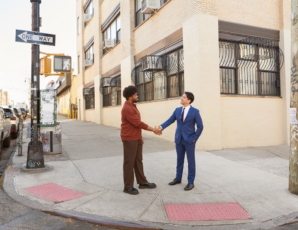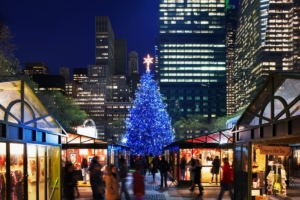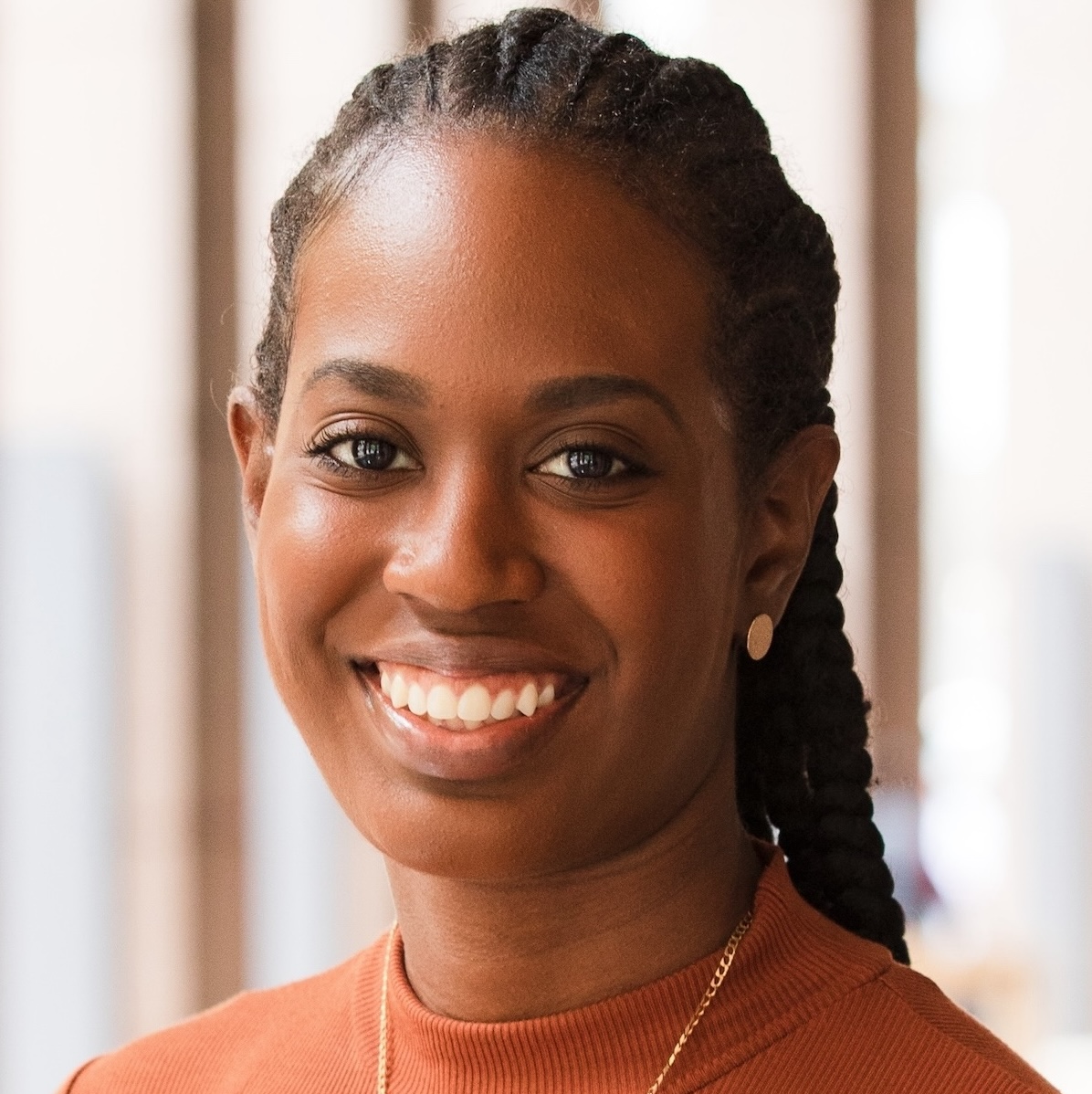Perhaps no other area better exemplifies the political, economic and racial strife of New York City in the 1970’s than the South Bronx. The construction of Robert Moses’ Cross-Bronx Expressway in the 1950’s split the South Bronx in two, helping to stoke tension that came to a fever pitch two decades later. Years of demographic shifts, lack of investment and concentrated poverty in the South Bronx erupted into mass looting and violence in the summer of 1977, which was symbolized by the famous line uttered by Howard Cosell during Game 2 of the World Series played at Yankee Stadium: “There it is, ladies and gentlemen, the Bronx is burning.”
A lot has changed in the last three decades. Crime is down across the area, including in the 41st Precinct, which was awash with drugs, prostitution, gangs and crime as depicted in the movie “Fort Apache, The Bronx.” Although the poverty rate remains high (nearly 60% of all children in the South Bronx still live in poverty), the murder rate has dropped 91 percent and many of the area’s infamous squeegee men and squatters are gone. As a result of these gradual improvements, the South Bronx has attracted more attention from New Yorkers and developers alike.
South Bronx Being Developed
When real estate developers talk about the South Bronx, they do so with the idea that industrial areas like Port Morris, Mott Haven, Melrose, Hunts Point and the Grand Concourse will attract growing investment and residential housing opportunities.
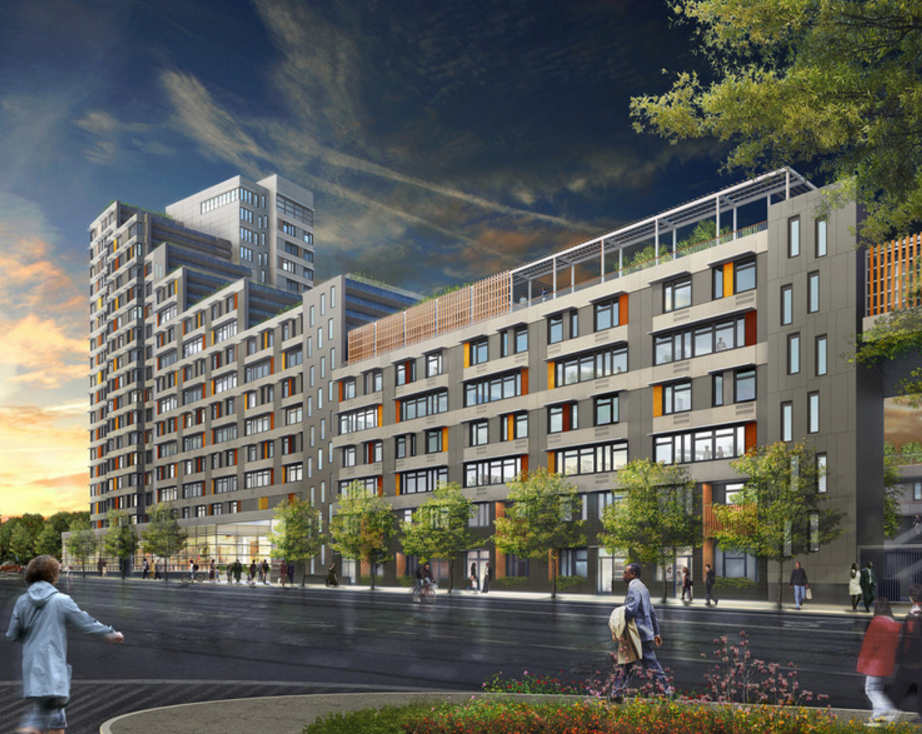
Artist’s rendition of Via Verde exterior.
Where Brooklyn has Dumbo and Red Hook, the Bronx promises similar shifts in its waterfront district and beyond. To the incredulous New Yorkers among us, that proposition may seem heady, but there is evidence that suggests change is coming. In 2012, for instance, the Via Verde co-op opened with 220 units that brought green living to the Woodstock section of the South Bronx at 700 Brook Avenue. Bronx Bricks at 305 East 140th Street sold out all 11 units after its opening as the first market-rate condo development in the South Bronx.
Cheaper land prices in the South Bronx are bringing developers who see opportunity, especially as Brooklyn and some parts of western Queens are commanding high prices and becoming out of reach for many. And while Bronx neighborhoods along the Hudson such as Spuyten Duyvil and Riverdale are already experiencing an influx of residents, the South Bronx is being eyed as another new frontier. Bruckner Boulevard has already seen incredible input as a key place for re-imagining the South Bronx.
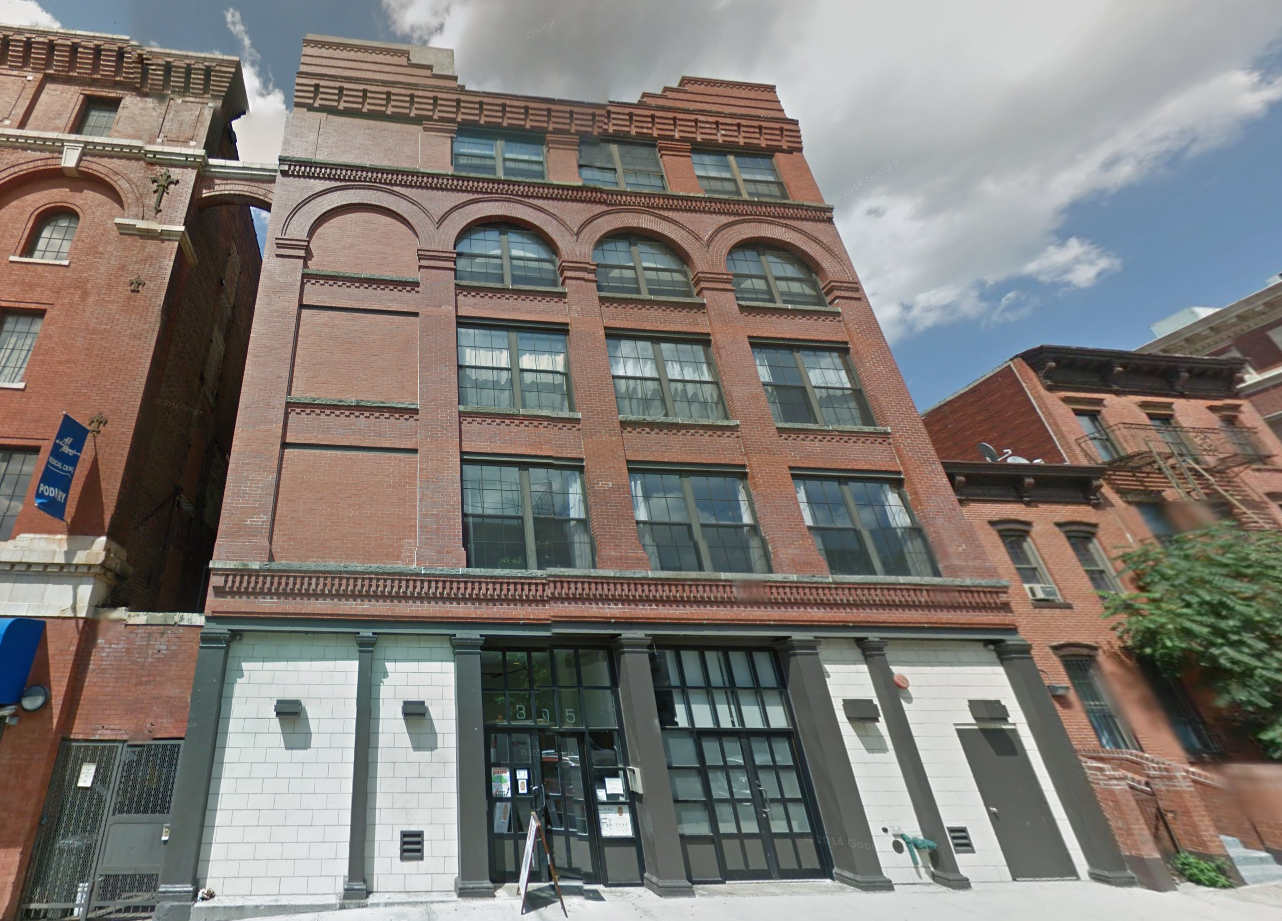
Bronx Bricks (Google Street View)
In 2014, more than $1.2 billion in real estate investments were spent in the South Bronx, according to Bronx Borough President Ruben Diaz. That was a 26 percent rise from 2013, a signal that developers see a good return in their investment in coming years in the South Bronx. Of that $1.2 billion, about $800 million was for residential development. Diaz’s office said the entire Bronx borough will see 8,000 new units in 2016, twice as many as were constructed in 2015.
Likewise, investors have snapped up 156 multifamily buildings in the South Bronx over the past three years. That’s more than 4,330 units, many of which are potential conversion projects from rental units to condos or co-ops.
The South Bronx: New York’s Next Hot Market?
This dynamic is not without its share of skeptics. Can the South Bronx attract restaurants and businesses to cater to urban hipsters, especially given the lack of parks and greenspace in this confined geographic area? Will urban workers really care to place themselves on the north side of the Harlem River, a subway stop away from Upper Manhattan?
The geography of the South Bronx, which rims Upper Manhattan and its tangle of infrastructure, has also played a role in its isolation. Separated by the Harlem River and the Major Deegan Expressway (Interstate-87) on the south end and the Cross Bronx Expressway in its northern territory, the South Bronx is choked by roadways built expressly to move people through the South Bronx. The congestion and air pollution are no small matters for residents already there.
Likewise, residents of the South Bronx are demanding that affordable housing options are part of the redevelopment mania aimed at this part of the city. In November of 2015, borough council members voted against rezoning proposals that are part of Mayor Bill de Blasio’s city-wide affordable housing plans.
But inroads have been made for the development of green space and transportation options that will improve the quality of life for South Bronx residents. There has been a big push from The Haven Project to promote open space between Mott Haven and Port Morris. In March of 2015, the NYS Department of Transportation authorized new pedestrian walkways and bike lanes along a key stretch of Bruckner Boulevard.
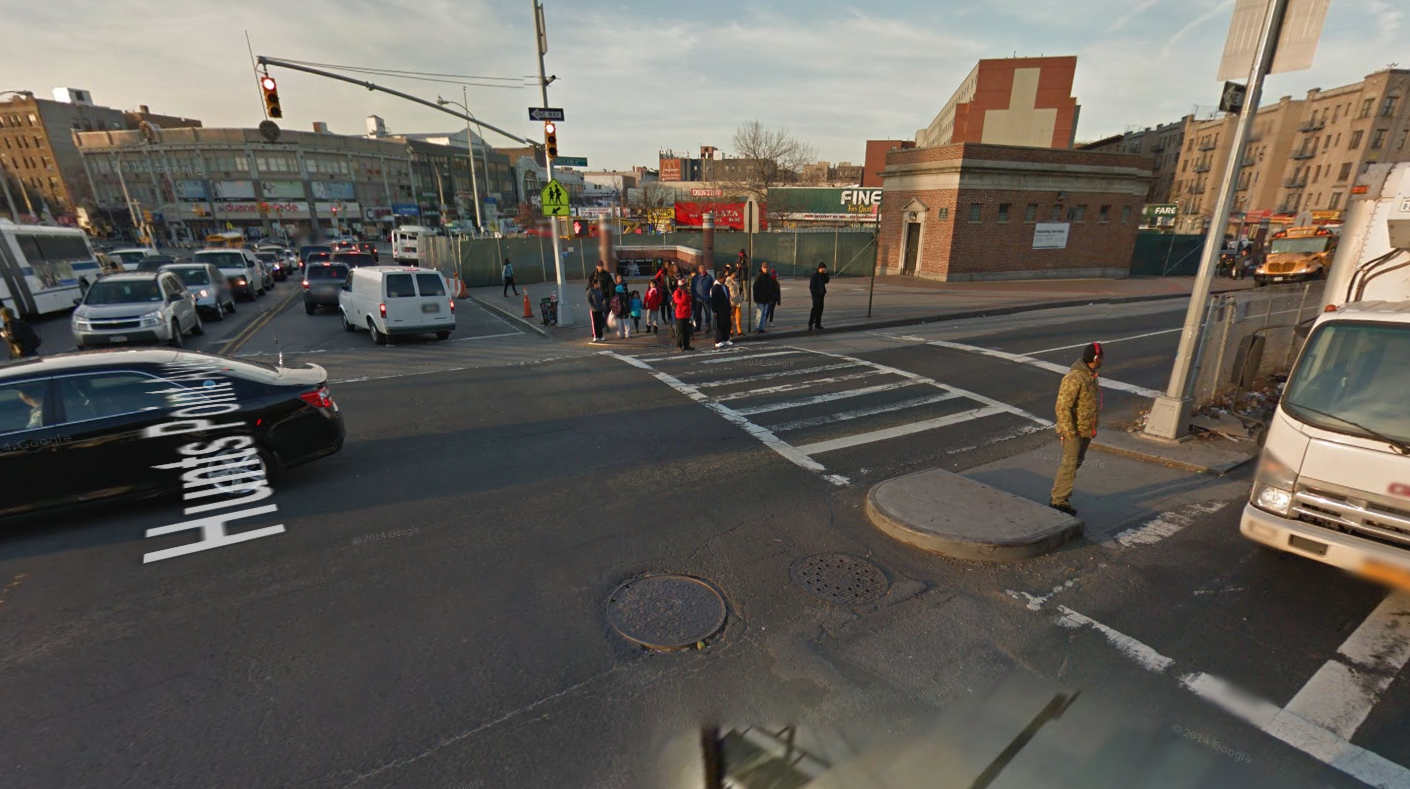
Corner of Bruckner Boulevard and Hunts Point. (Google Street View).
Developments like this are critical to the South Bronx’s turnaround from danger zone to residential zone. That new, protected area designated for pedestrians and cyclists makes it better for people to access the No. 6 subway line and Hunts Point. These bike lanes will hook up to the the new Randall’s Island Connector.
This pathway was officially opened in the fall of 2015, connecting the South Bronx and Randall’s Island. The Randall’s Island Connector provides a critical transportation link for pedestrians and bicyclists and increased accessibility and opportunities for the people of the Bronx between 132nd Street running southward under the existing Amtrak trestle, over the Bronx Kill to Randall’s Island. This has opened access to 330 acres of recreational resources at Randall’s Island Park, including sports fields and facilities, restored wetlands, gardens, picnic areas and waterfront bicycle and pedestrian pathways.
The ‘Piano District’?
For decades, the Third Avenue Bridge has been mostly known by non-Bronx residents as a free way to get into Manhattan. Now, though, this five-lane go-between is a place where developers are putting their stake in the ground.
As of November 2015, plans for three, 25-story residential towers were filed with the city that are expected to bring a total of about 1,600 residential units to the South Bronx at this Third Avenue Bridge intersection. Without question, the approval of these three towers would recreate the waterfront area on the north side of the Harlem River.
No wonder then that developers are were attempting to rebrand this section of Mott Haven as “The Piano District.” A billboard placed there in the fall of 2015, however, renewed angst among Bronx natives about the gentrification of the South Bronx. The billboard was defaced within weeks, as residents rebuff the gentrification wave.
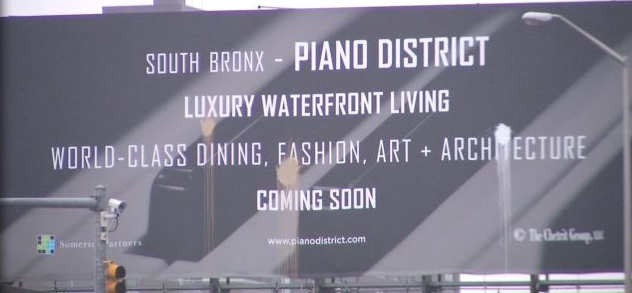
Piano district billboard splattered with paintballs (Courtesy Bronx.news.12.com)
Two of these towers are being developed as the Harlem River Waterfront in The South Bronx by The Chetrit Group and Somerset Partners. If approved, one tower containing 826 units will be located at 101 Lincoln Avenue; a second tower at 2401 Third Avenue will contain 370 residential units. The partners paid $26 million for the Third Avenue property in January 2015.
A third tower will be located right up against the Major Deegan Expressway at 98 East 135th street and will contain 465 units. All three towers will contain massive ground-floor commercial space, which will foster development of commercial businesses necessary to support new residents, since services are basically non-existent in this area.
Related:



